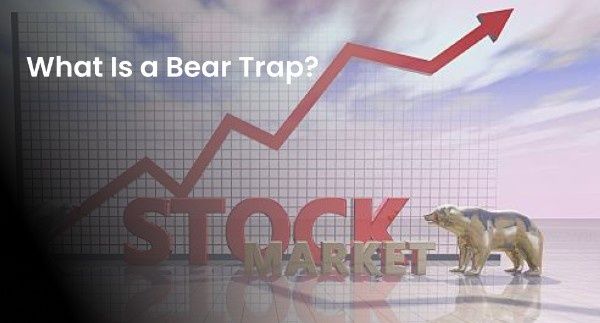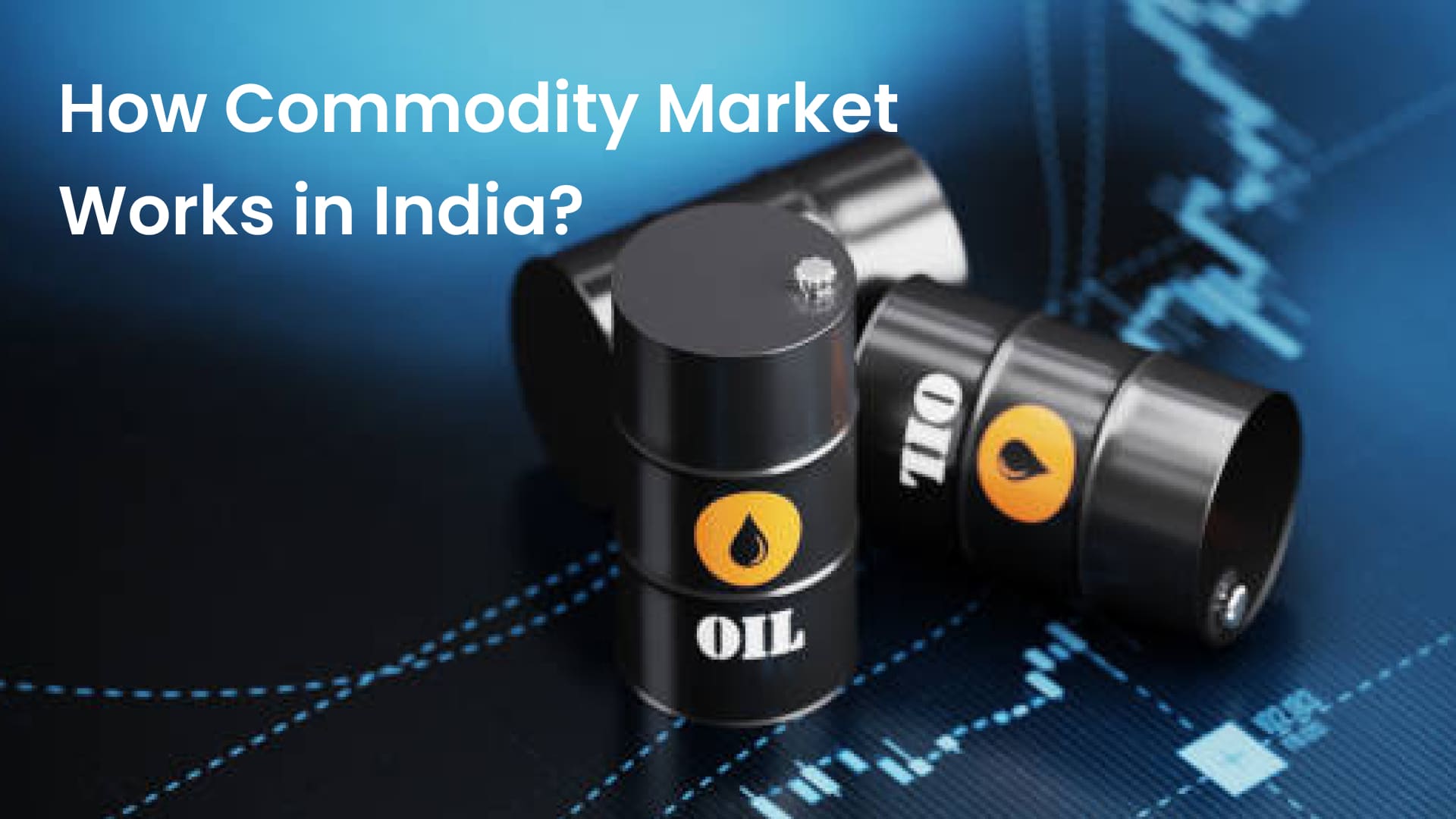The Beginner’s Guide to Exchange-Traded Funds (ETFs) in India

When you are first beginning your journey of participating in the Indian financial markets, you may primarily focus on stocks and bonds. However, as you gain more experience, you may want to expand your portfolio to include assets from other market segments too. One of these asset classes includes exchange-traded funds or ETFs.
Not sure what the meaning of ETFs is and how they work? Let’s take a closer look at all the finer details of exchange-traded funds in this comprehensive guide.
What are Exchange-Traded Funds?
An exchange-traded fund or ETF is a marketable asset that tracks a benchmark. It consists of a basket of different assets such as stocks, bonds, other securities, gold or any other asset. The benchmark being tracked by an exchange-traded fund can also vary. It could be an index, bonds, commodities or even index funds.
ETFs aim to replicate the portfolio of the benchmarks they track and do not attempt to beat that benchmark. So, by investing in ETFs, you can aim for returns that match the benchmark’s returns. Since they typically consist of a basket of assets, they are inherently diversified, making them suitable for investors aiming to diversify their current portfolios.
Key Features of Exchange-Traded Funds
Exchange-traded funds come with many distinct characteristic features that set them apart from other types of mutual funds and asset classes. Here is an overview of such features.
Tradability
The very meaning of ETFs is that they are traded on an exchange, just like common stocks. This makes them highly tradable, with the prices of ETFs changing throughout the day just like the prices of stocks.
Passive Management
Exchange-traded funds are passively managed. Since they only track the underlying asset or benchmark, there is no need to actively select the assets in the ETF’s portfolio. Instead, fund managers only need to make minor adjustments to the portfolio as and when it may be needed.
Cost-Efficient Structure
Since exchange-trading funds are passively managed, they are relatively more cost-efficient than actively managed assets. This is because the administrative costs are much lower — often just 0.20% per year when compared with over 1% per year for some actively managed funds.
Liquidity
Exchange-traded funds are also liquid since they are easily sold and bought in the secondary market. Additionally, they support in-kind redemption, where investors exiting their positions receive non-cash payments in the form of other assets, thus making ETFs highly liquid.
ETFs vs Other Assets
Now that you know the meaning of ETFs and their distinct characteristics, let’s check out how exchange-traded funds compare with other assets like stocks, mutual funds and index funds.
ETFs vs Equity Stocks
Stocks represent direct ownership in the company, while ETFs are more a basket of assets which may or may not include stocks. Furthermore, stocks are also more actively managed directly by the investor, unlike ETFs. So, if you are an experienced investor looking for greater control over your portfolio, equity stocks may be suitable. However, if you prefer more passive investments, ETFs are the ideal choice.
ETFs vs Index Funds
Both exchange-traded funds and index funds track specific benchmarks. However, ETFs can be freely traded on the stock exchanges, unlike index funds. Additionally, exchange-traded funds also come in different types — some of which track benchmarks other than market indices. This gives you more options to choose from.
ETFs vs Mutual Funds
Mutual funds and exchange-traded funds do have some similarities. For instance, they both pool investor funds to invest in a basket of assets. However, mutual funds, unlike ETFs, cannot be traded via a stock exchange. They can be purchased directly from the mutual fund house. Additionally, mutual funds are also actively managed by portfolio managers, unlike ETFs which are passively managed and simply track the benchmark.
Let’s tabulate the key differences between ETFs and other asset classes below.
Particulars | Exchange-traded Funds | Equity Stocks | Mutual Funds |
|---|---|---|---|
Meaning | An exchange-traded basket of assets that tracks an underlying benchmark | Securities that represent units of ownership in companies | Investments that pool together capital from different investors and purchase different assets |
Tradability | Easily tradable on the stock exchanges | Easily tradable on the stock exchanges | Not tradable on the stock exchanges |
Investor Control | Less control | More control | Moderate control |
Management | Passively managed by fund managers | Directly managed by investors | Actively managed by fund managers |
Risks | Lower risk than stocks | High-risk investments | Risk levels depend on the assets in the portfolio |
The Different Types of ETFs
Depending on the asset classes that they are exposed to, exchange-traded funds can be of different types. Check out the main categories of ETFs that you can choose from for your portfolio.
Equity Exchange-Traded Funds
Equity ETFs primarily invest in equity stocks. They aim to track a specific bunch of equity stocks, depending on the objective of the ETF. Funds in this category give you exposure to a diverse mix of equities.
Index Exchange-Traded Funds
Index ETFs are a subset of equity ETFs. They track an existing market index like the NIfty 50 or the S&P BSE Sensex and invest in a basket of stocks that replicates the benchmark index. The underlying index can also be thematic or market cap indexes.
Sectoral Exchange-Traded Funds
Sectoral ETFs track different sectors of the economy like energy, healthcare, information technology, financial services and more. By investing in sectoral exchange-traded funds, you can diversify your portfolio across different portfolios.
Debt Exchange-Traded Funds
Also known as fixed-income ETFs, these exchange-traded funds predominantly invest in a mix of fixed-income debt securities like government bonds, corporate bonds and other such instruments.
Gold Exchange-Traded Funds
As the name indicates, gold ETFs invest in physical gold or even derivatives linked to the price of the yellow metal. By including gold exchange-traded funds in your portfolio, you can tap into the advantage of gold price rise without actually owning the commodity.
Commodity Exchange-Traded Funds
Commodity ETFs are a broader category of exchange-traded funds that give your portfolio exposure to different commodities like agricultural produce, crude oil and natural gas, other precious metals and more.
Currency Exchange-Traded Funds
Currency exchange-traded funds invest in foreign currencies like the US Dollar, Euro, Great Britain Pound and more. Since the forex market itself is highly liquid, currency ETFs add an extra layer of liquidity for traders.
Global Exchange-Traded Funds
Global ETFs invest in assets from different countries and regions around the world. These funds offer diversification across different markets and can include a mix of equities, fixed-income securities and other asset classes from various countries.
Inverse Exchange-Traded Funds
Inverse ETFs, also known as bear ETFs, are designed to move in the opposite direction to the performance of a specific index or asset. This makes it possible to generate returns in a falling market. These ETFs are often used by investors as a hedging tool against market declines or as a way to profit from falling asset prices.
Types of Returns Offered by Exchange-Traded Funds
Depending on the assets in its basket of stocks and the market movements, exchange-traded funds offer two types of returns to traders and investors.
Dividends
Dividends are portions of the profits of companies that are paid out to shareholders. If an exchange-traded fund’s portfolio includes blue-chip companies that pay out dividends, investors may receive these payouts. Alternatively, they may also be reinvested in the fund’s asset portfolio.
Capital Gains
Capital appreciation occurs if you sell the ETFs in your portfolio at a higher price than the costs of the exchange-traded funds. Also known as capital gains, these returns are realised when you sell the ETFs you hold.
ETF Taxation in India
The returns from exchange-traded funds are taxed as per the Income Tax Act, 1961. Depending on the type of returns received, here is how the taxation occurs.
Taxation of Dividends
Dividends that you receive from exchange-traded funds are taxed as per the income tax slab rate applicable to you. Tax may be deducted at source if the dividends exceed certain predetermined limits.
Taxation of Capital Gains
Capital gains from exchange-traded funds are taxed depending on whether they are short-term or long-term gains. This depends on the type of ETF as well as the holding period. Here is how this works.
Particulars | Equity ETFs | Debt, Gold and Other ETFs |
|---|---|---|
Short-term capital gains (STCG) duration | Less than 12 months | Less than 36 months |
Taxation of STCG | At flat 15% | As per applicable slab rates |
Long-term capital gains (LTCG) duration | 12 months or more | 36 months or more |
Taxation of LTCG | Gains up to Rs. 1 lakh are tax-free and gains exceeding Rs. 1 lakh are taxed at 10% without indexation benefits | At flat 20% with indexation benefits |
Factors to Consider When Selecting ETFs for Your Portfolio
Selecting the right Exchange-Traded Funds (ETFs) is crucial for achieving your investment goals. Here are some important factors to consider when selecting ETFs for your portfolio.
Your Investment Goals
Determine your investment objectives, risk tolerance, and time horizon. Are you looking for long-term growth, income or a combination of both? Your goals will impact the types of ETFs you should consider.
The ETF's Objective
Each ETF is designed to track a specific index, sector or asset class. Make sure you understand what the ETF aims to achieve and how it fits into your overall investment strategy.
Expense Ratio
ETFs may charge a management fee known as the expense ratio. Lower expenses can have a significant impact on your returns over time, so compare the expense ratios of different ETFs within the same category.
Liquidity and Trading Volume
Look for ETFs with sufficient liquidity and trading volume. Higher trading volumes typically mean smaller bid-ask spreads, making it easier and cheaper to buy and sell them on the exchange.
Asset Under Management (AUM)
AUM refers to the total value of the assets held by the ETF. While a large AUM can indicate popularity and stability, it's essential to balance this factor with other considerations.
Performance Track Record
Although past performance is not indicative of future results, reviewing an ETF's historical performance can give you insights into how it behaves during different market conditions.
Risk Profile
Assess the risk associated with the ETF. Some ETFs may be more volatile than others due to their underlying assets or strategies.
Tax Efficiency
As you’ve seen above, different ETFs come with different tax rates. Some are structured to be more tax-efficient than others, which can be crucial for your investment strategy.
Conclusion
This wraps up the complete guide to ETFs in India. If you think this market segment may be suitable for your investment goals and objectives, you can modify your investment plan to include exchange-traded funds as well. However, keep in mind that they come with their own limitations. So, ensure that you balance out the market-linked risks of ETFs with stabler investment options and reduce the overall risk in your portfolio.

















